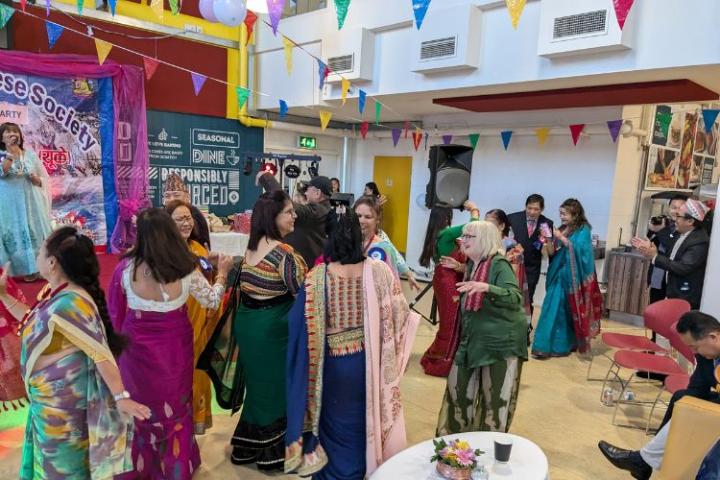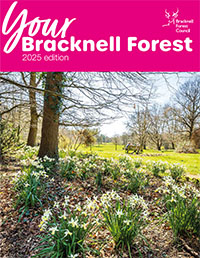
Tuesday 29 October marks the beginning of the Nepalese festival of lights, Tihar Festival – the second biggest Nepalese festival.
On Saturday 19 October, the Bracknell Nepalese society held a community event at Garth College in celebration of Dashain and Tihar, 2 key festival dates in Hindu religion.
Jenny Penfold, mayor of Bracknell Forest, and Dave Bryan, community engagement officer, were invited to join in the celebrations. They enjoyed cultural dance, music and food whilst chatting with members of the Nepalese community.
The president, Gajendra Rai, made a speech and thanked Bracknell Forest Council for supporting the community with inclusion events and providing public health support.
While each Hindu ethnic group in Nepal celebrates Tihar in slightly different ways, the main outlines remain the same everywhere.
The season is called the ‘Festival of Lights’ after the clay lanterns (‘diyas’) that are lit and stacked around houses every night. People use pigmented rice, flour, sand, and flower petals to make rangoli, which are decorative patterns on the floors of homes and outdoor areas. They are meant to honour and welcome various Hindu gods and goddesses to the home.
Also of high importance is the honouring of various animals during Tihar. On the 5 days of Tihar, the following traditions are commonly practiced in Nepal:
Day one
On this day, crows and ravens are worshiped and fed sweet foods and delicacies, which are left for them to find on Hindu roof tops. The caw-caw of the gathering crows is a symbol of sadness to Hindus, and feeding the crows is thought to prevent various calamities.
Day two
Day two is the day of the dogs. Dogs are thought to be messengers of the god of death and are worshipped on this day every year. They wear wreaths and bear red or white dots (‘tika’) on their foreheads.
Day three
In the morning, cows are worshipped. They are thought to be symbols of prosperity, and so wreaths and tika are also placed upon them. On the evening of the third day, the Hindu goddess of wealth is honoured by lighting up oil lamps in doorways and windows of homes. Music, singing, and dancing are also done door-to-door in exchange for tips.
Day four
Oxen are worshipped in much the same way as the cows and dogs. Some, though not all Hindus, worship toward Goverdhan Mountain on this day and make a ‘mini-mountain’ of cow dung to represent it.
Day five
The final day of Tihar has sisters putting tika on their brothers’ foreheads to secure for them a long and happy life. This tradition is based on the story of a Hindu goddess who did the same to her brother. At special ceremonies, sisters encircle brothers and put 7-coloured tika on their foreheads, and gifts are also exchanged.
You may see homes across the borough with additional decoration. We’d like to wish all staff and residents celebrating a Happy Tihar!
